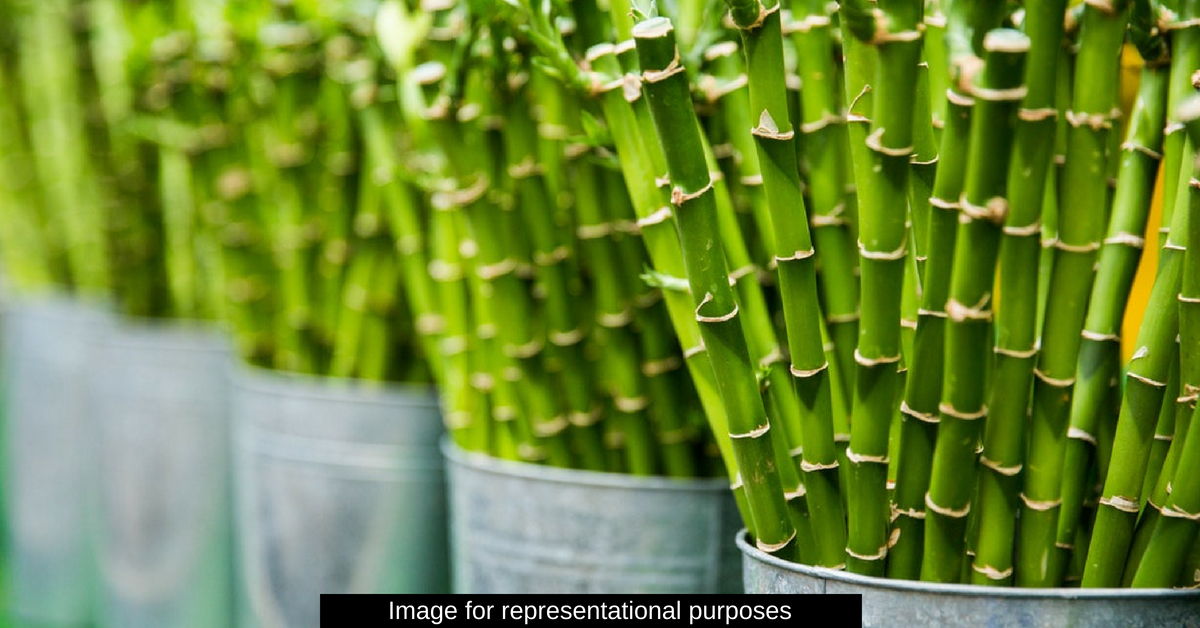Looking for Reusable Straws? You’ll Love This Unique Innovation from the Andamans!
Lal Ji Singh, scientist and head of the office at BSI’s Andaman and Nicobar Regional Centre in Port Blair, told The Hindu that in its natural form, the bamboo species could not be used as a straw.

Imagine using bamboos as straws. As hilariously large they would be to use, they could become a reality.
Well, at least not the large ones we have in mind, but one of the bamboo species – Schizostachyum andamanicum could be used as an eco-friendly replacement of plastic straws.
The species is native to the Andaman Islands and is currently being studied by Indian scientists at the Botanical Survey of India (BSI) to explore their potential use as a green alternative as a reusable bamboo straws.
Discovered on the island nearly two decades ago, this species is characterised by a thin, large, hollow stem with long internodes.
Scientists took the sections of the stem between the nodes and cut it into small pieces, to the length of a drinking straw. This can either be achieved manually or with the use of machinery.
Once the stems are cut, the sheath of the bamboo is removed with the solid nodes cut off.

Lal Ji Singh, scientist and head of the office at BSI’s Andaman and Nicobar Regional Centre in Port Blair, told The Hindu that in its natural form, the bamboo species could not be used as a straw.
But after observing the plant’s appearance and structure, he found that it was ideal to be turned into a drinking straw after some tweaks.
Bamboo is a type of grass, and this native species is found abundantly over the islands. And it can easily be grown as well.
About his venture, Dr Singh says, “After I registered the invention with the patent office under the title ‘Reusable Straw and Its Manufacturing’, I took 5,000 sample straws and distributed it during the World Environment Day Celebrations held in New Delhi earlier this year.”
The bamboo straw is reusable. Even when it gets deteriorated, it is easily decomposed in the soil, hence very eco-friendly.
With an estimated cost of 50 paise, the bamboo straws outrun their plastic counterparts regarding longevity as well as environmental impact.
“If the per capita consumption of plastic has to be brought down, it can be done by promoting natural products like bamboo and jute and other such innovations,” Dr Singh concluded.
(Edited by Shruti Singhal)
Hey, you may also like: Goodbye Disposables, Hello Reusables; Kerala Govt Offices Boycott Polluting Plastic
Like this story? Or have something to share?
Write to us: [email protected]
Connect with us on Facebook and Twitter.
NEW: Click here to get positive news on WhatsApp!

Similar Story

Startup’s Innovation Could Help Millions Get Access to Better Brain Health At Home
Ivory, a pioneering age-tech startup founded by Issac John and Rahul Krishnan, aims to redefine the ageing experience by focusing on better brain health, through neuroscience-backed assessments, interactive games, and personalised solutions.
Read more >
If you found our stories insightful, informative, or even just enjoyable, we invite you to consider making a voluntary payment to support the work we do at The Better India. Your contribution helps us continue producing quality content that educates, inspires, and drives positive change.
Choose one of the payment options below for your contribution-
By paying for the stories you value, you directly contribute to sustaining our efforts focused on making a difference in the world. Together, let's ensure that impactful stories continue to be told and shared, enriching lives and communities alike.
Thank you for your support. Here are some frequently asked questions you might find helpful to know why you are contributing?


This story made me
-
97
-
121
-
89
-
167












